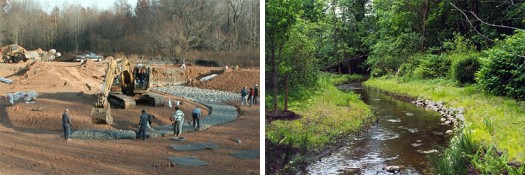
We are celebrating 15 years — and counting — of stories that are deeply researched and deeply felt, that build a historical record of what the city has been.
We are celebrating 15 years — and counting — of stories that are deeply researched and deeply felt, that build a historical record of what the city has been.
To mark the fifth anniversary of the launch of Urban Omnibus, we look at themes that have emerged in our content over time and think about what those threads reveal about the needs, desires, and priorities of the city today.
Over the last five years, many features on Urban Omnibus have been dedicated to observing, interpreting, and pulling apart the infrastructure that mediates how people interact with natural and human-made environments: buildings and biota, the physical and networked, gargantuan and microscopic. Looking closely at infrastructure provokes an endless stream of ideas about ecologically, fiscally, and socially responsible citymaking. What we especially like about multi-tasking infrastructures is their rich capacity to probe the intersections between climate change, land use planning, environmental engineering, public health, open space, community activism, and many other important issues.
Many features have explored individual infrastructural solutions to the city’s pernicious combined sewage overflow (CSO) problem. Ecologist and plant scientist Paul Mankiewicz talked to us about a new kind of catchment system on Stratford Avenue in the Bronx and why the city’s waste stream is its greatest untapped ecological and economic asset. In a similar vein, Tyler Caruso and Erik Facteau shared findings from their research project, Seeing Green, which sets out to prove scientifically the environmental benefits of rooftop and other urban farms, in particular their ability to manage stormwater. Kerri Culhane explained the geographical, historical, and architectural factors that make the Lower East Side’s Two Bridges neighborhood uniquely suited to put green infrastructure into action.
On a larger scale, the story behind the design and implementation of the Staten Island Bluebelt — a decades-long project to find ecological solutions to problems like failing septic systems, degraded water quality, erosion, and flooding — offers a case study for how these ideas become manifest in a borough-wide public infrastructure project.

Left: Constructing a wetland. Right: Carefully planned landscaped zones remove pollutants while maintaining biodiversity | Images courtesy of Hazen and Sawyer
We’ve also reported on methodological breakthroughs in urban ecological design. Landscape architect and ecologist Alexander Felson described how embedding scientific experiments into the design process, can yield more productive landscapes, new forms of collaboration, and more informed community members. Vanessa Keith has challenged the common global inclination to tackle the massive challenges of environmental sustainability exclusively with massively scaled solutions, envisioning retrofits and clip-ons to existing infrastructures that can have a prodigious effect when widely implemented.
In the spirit of multi-tasking, many infrastructural projects with environmental goals have demonstrated how innovation can yield more socially connected, exciting, and beautiful public places for New Yorkers. Adam Lubinsky has discussed how the East River Blueway plan, when fully implemented, will enable a wide range of uses, including waterborne recreation, transportation, and ecological education and restoration at sites along the water in Manhattan; Margie Ruddick, Sandro Marpillero and Linda Pollak shared their vision for Queens Plaza — one of the first projects to follow Bloomberg’s “High-Performance Infrastructural Guidelines” for sustainability — and discussed how the plan seeks to redefine the idea of nature in the city, integrating infrastructure, art and ecology; and Sheila Kennedy and Veit Kugel’s interview about their “smart buildings” (including the East 34th Street Ferry Terminal) reflects a singular and synergistic approach to architecture, infrastructure, and civic space.
The views expressed here are those of the authors only and do not reflect the position of The Architectural League of New York.